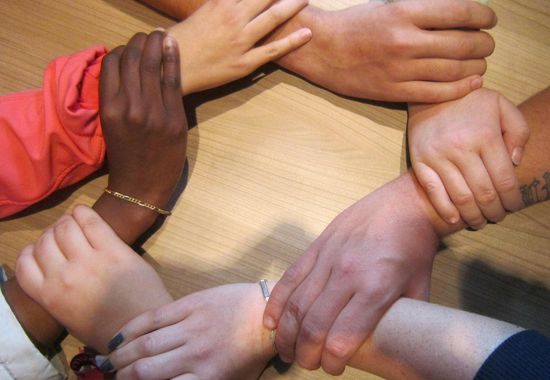The Foundation World Couldn't Care Less About Your Cause? Start a Giving Circle
/
As you might be able to tell from Inside Philanthropy's past coverage, we love giving circles. In unconventional ways, they have been addressing the unmet needs of women and minority groups lately, offering grant opportunities where they simply don’t exist from established funders.
As we’ve covered in the past, giving circles have really exploded in California, empowering “philanthroactivists” to put their money and efforts towards economic justice and equal opportunities. But we're also seeing them elsewhere. Again and again, women have been the key drivers here. Take the Asian Women Giving Circle, based in New York City, which is the first and largest of its kind, using arts and culture to raise awareness about critical issues.
Related:
- Women’s Giving Circles: How They’re Changing Philanthropy in California
- Attention Asian American Women! Check Out This Grant Opportunity
Today, we highlight another giving circle movement that addresses the needs of a community that very few funders are paying attention to: LGBT Asian Americans.
A woman named Alice Y. Hom has been a passionate leader in this effort, ever since discovering that an infinitesimal amount of foundation money was going towards this cause. Asian Americans and Pacific Islanders in Philanthropy (AAPIP) connected with Funders for LGBTQ Issues to determine exactly how much foundation money is flowing here – just $648,000 nationally in a past year. You can check out the @LGBTfunders report and infographic about global LBGT funding on Twitter.
Since 2009, AAPIP has created a network of giving circles to serve the Asian American LGBT community. Hom and her boss, Peggy Saika, established the Queer Justice Fund (QJF) through AAPIP to raise awareness, largely with the support of the Arcus Foundation.
We knew foundations weren't going to be the answer. That is AAPIP's long-term goal and we're not going to give up just because we're in a for-profit world. But we also know that's going to take a long time and in the meantime our communities are in need. That's why AAPIP had this other strategy of having giving circles to harness community philanthropy. People come together to have a bake sale or a fundraiser, and they donate to nonprofits. That's how organizations have already been supporting themselves.
When APPIP recently celebrated the end of its National Giving Circle Campaign, they had helped create 51 giving circles. These giving circles are located all over the U.S. – in California, Texas, New York, Pennsylvania, Illinois, North Carolina, and many other places. But regardless of location, Asian Americans in this industry are really capitalizing on the momentum of giving circles and realizing that they hold a lot of promise for groups that identify with this culture.
"I realized there had to be a bigger movement in philanthropy," Paul Ocampo, of the Asian Americans Advancing Justice - Asian Law Caucus and Lacuna Giving Circle, told NBC News. "Something that was more grassroots and a little more driven by people like us — people who work in the communities."
For now, it looks like giving circles may offer the best opportunities for minority groups within minority groups, like LGBT Asian Americans. With all of the LGBT-related hate and violence happening these days, community-focused giving circles that aren’t even LGBT specific have been showing direct support for LGBT groups nearby.
For example, API’s RISE in Sacramento, California started raising awareness about the AAPI LGBT community to address gaps in support. Shortly thereafter, API Queer Sacramento was formed. Giving circles has also been popping up in New York, including The Dinner Guys, which simply started out as a dinner club and has since transformed into a giving circle.
Yet one of the biggest hurdles to overcome with this model of giving is getting people in the community to step outside their busy lives and become engaged as members. Leaders like Ocampo believe the key here is to provide unique ways to make bigger impacts that are visible and relevant.
Slowly but surely, the growth and prominence of giving circles are changing people’s perceptions about their roles in the community and reinforcing the fact that you don’t need to have millions of dollars to make a difference. In severely underfunded population groups, like LGBT Asian Americans, giving circles fueled by pooled dollars from passionate individuals can make all the difference in the world.








